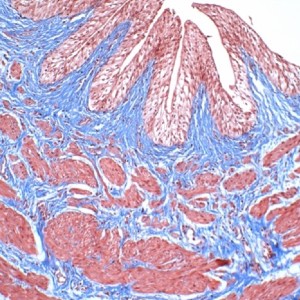Ureteropelvic junction obstruction in children by polar vessels: histological examination result

Submitted: 17 January 2023
Accepted: 15 May 2023
Published: 30 May 2023
Accepted: 15 May 2023
Abstract Views: 673
PDF: 335
HTML: 8
HTML: 8
Publisher's note
All claims expressed in this article are solely those of the authors and do not necessarily represent those of their affiliated organizations, or those of the publisher, the editors and the reviewers. Any product that may be evaluated in this article or claim that may be made by its manufacturer is not guaranteed or endorsed by the publisher.
All claims expressed in this article are solely those of the authors and do not necessarily represent those of their affiliated organizations, or those of the publisher, the editors and the reviewers. Any product that may be evaluated in this article or claim that may be made by its manufacturer is not guaranteed or endorsed by the publisher.
Similar Articles
- Valentina Bozzetti, Paolo E. Tagliabue, Enteral nutrition for preterm infants: by bolus or continuous? An update , La Pediatria Medica e Chirurgica: Vol. 39 No. 2 (2017)
- Salvatore Fabio Chiarenza, Cosimo Bleve, Ciro Esposito, Maria Escolino, Fabio Beretta, Maurizio Cheli, Vincenzo Di Benedetto, Maria Grazia Scuderi, Giovanni Casadio, Maurizio Marzaro, Leon Francesco Facetti, Pietro Bagolan, Claudio Vella, Maria Luisa Conighi, Daniela Codric, Simona Nappo, Paolo Caione, Guidelines of the Italian Society of Videosurgery in Infancy for the minimally invasive treatment of the ureteropelvic-junction obstruction , La Pediatria Medica e Chirurgica: Vol. 41 No. 2 (2019)
- Francesca Scarano, Alessandra Dalla Corte, Roberto Michielon, Alessandro Gava, Paola Midrio, Application of a non-pharmacological technique in addition to the pharmacological protocol for the management of children’s preoperative anxiety: A 10 years’ experience , La Pediatria Medica e Chirurgica: Vol. 43 No. 1 (2021)
- Fabio Mosca, Maria Lorella Giannì, Human milk: composition and health benefits , La Pediatria Medica e Chirurgica: Vol. 39 No. 2 (2017)
- Antonio Marte, Lucia Pintozzi, Tubularized proximally-incised plate in distal/midshaft hypospadias repair , La Pediatria Medica e Chirurgica: Vol. 39 No. 2 (2017)
- Ismael José Dorta Luis, Paloma González Carretero, Carmen Luz Marrero Pérez, Ignacio Hernández Cabezudo, Antonio López Figueroa, Andrea González Palau, Pulling out a broken catheter using interventional radiology in a preterm. Neonatal intensive care , La Pediatria Medica e Chirurgica: Vol. 43 No. 1 (2021)
- Savina Mannarino, Eitan Keizman, Michele Pasotti, Alessia Claudia Codazzi, Elisabetta De Sando, Alessandro Giamberti, A rare case of discrete aortic coarctation in Williams-Beuren syndrome. Diagnostic and therapeutic considerations , La Pediatria Medica e Chirurgica: Vol. 37 No. 2 (2015)
- Marta Peretti, Arianna Mariotto, Gabriella Scirè, Elisa Pani, Silvia Zambaldo, Sanzio Bianchi, Francesco Saverio Camoglio, Luca Giacomello, Wandering spleen with a ten-time twisted vascular pedicle , La Pediatria Medica e Chirurgica: Vol. 38 No. 3 (2016)
- Giovanna Stringari, Giulia Barbato, Matteo Zanzucchi, Maddalena Marchesi, Giuseppe Cerasoli, Bertrand Tchana, Alessandro Gritti, Valeria Boccaletti, Alfonsa Anna Lombardi, Nicola Carano, Propranolol treatment for infantile hemangioma: a case series of sixty-two patients , La Pediatria Medica e Chirurgica: Vol. 38 No. 2 (2016)
- Ivan Ivanovski, Livia Garavelli, Olivera Djurić, Aleksandar Ćirović, Dejan Škorić, Petar I. Ivanovski, Mitotic crossover promotes leukemogenesis in children born with TEL-AML1 via the generation of loss of heterozygosity at 12p , La Pediatria Medica e Chirurgica: Vol. 37 No. 2 (2015)
You may also start an advanced similarity search for this article.

 https://doi.org/10.4081/pmc.2023.308
https://doi.org/10.4081/pmc.2023.308




